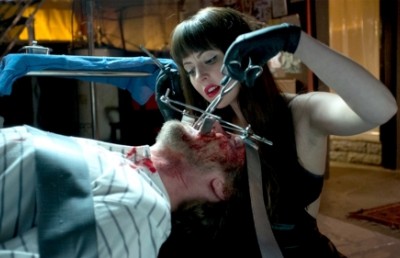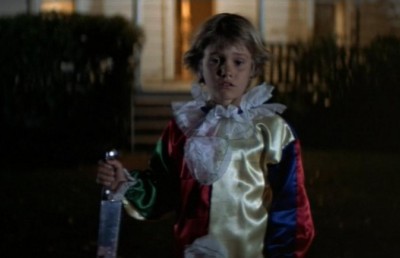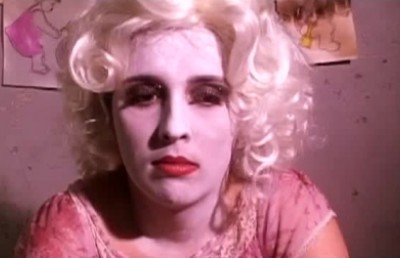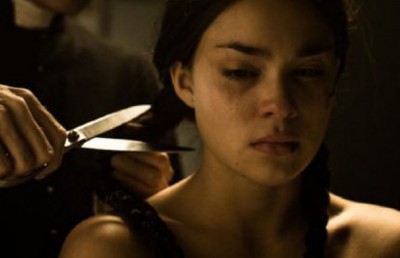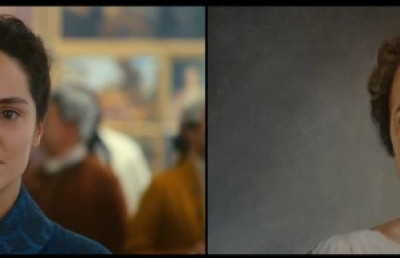‘Mad Women’ in Robert Altman’s 3 Women and Images
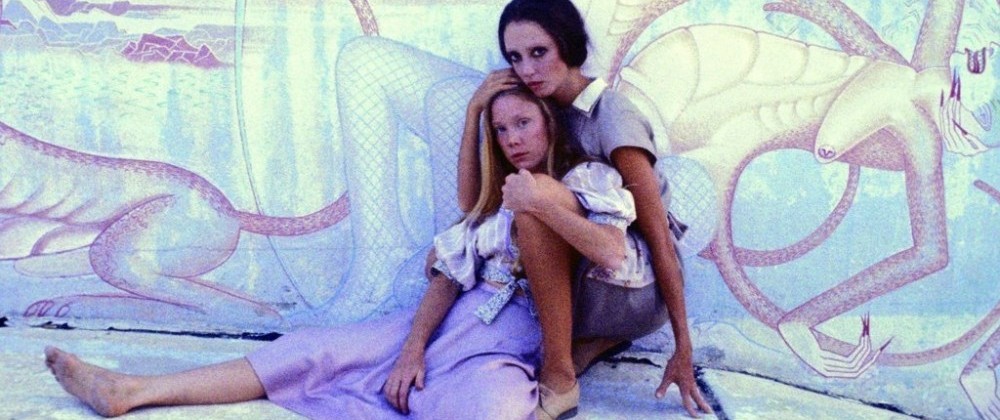
Introduction
It has been duly noted that in 20th century cinema, the creation of an emotionally stable female character is an unrealistic enterprise (Janisse 8). A common archetype in the Horror genre has been the inexplicable mad woman. Mad women have been in films as early as the late teens, with the “swooning girls” of The Cabinet of Dr. Caligari and the Universal horror films of the 1930s, evolving into a familiar terror (Janisse 8). The horror genre has always been a place where societal anxieties and moral panic play out on screen and the source of anxiety is demonized and, very often, silenced. It is not a coincidence that women’s minds were being presented as more twisted and disturbed in films as women gained more autonomy in the home, workplace, and society.
Furthermore, the development of the mental health field can be seen as a root for these characterizations. Stemming from early theories surrounding personality and psychopathology, personality disorders have been associated with the feminine (Brown, 212) 1 . Kier-la Janisse points out that the “female neurotic” lives in opposition to the mentally unstable male “eccentric” (8). Although my purpose in this paper is not to make a comparison between representations of male and female neurosis, it is important to point out that while this dichotomy is very present in the horror genre and is, I would argue, representative of societal beliefs, it cannot be justified using biological determinism in real life. There is no definite neurological model that has been produced that can prove real sex differences in the brain. 2
The stigmatization of the “crazy woman” has become ever-present in our society and can be seen as embodied by the countless female antagonists in horror films whose ontological confusions lead to destruction. These women, unable to distinguish themselves from others, good from evil, and the physical from the metaphysical, transport us as viewers to a liminal space where we are drawn into the same confusions. While some horror films do represent the mad woman as so far gone that she embodies a monster that must be destroyed, I will be focusing on films that bring us to this space of confusion and leave us there: Robert Altman’s 3 Women (1977) and Images (1972). I will discuss how these women, who lack autonomy and are seen as dangerous based on their lack of sound judgment, reinforce stigmas engrained in our society that so closely align “crazy” with “woman”. While rooting my arguments in feminist critiques and observations of the mental illness field, I plan to extend Kier-la Janisse’s arguments surrounding these films in House of Psychotic Women and discuss them in the light of the stigmas that have developed in our society that conflate the failure of fulfilling gender roles with mental instability.
History of Gendered Mental “Illnesses”
First off, I will provide a brief history of the way in which psychiatry has developed as gendered. Elaine Showalter notes that late Victorian psychology was heavily influenced by Darwinian theories of sexual difference. Preceding the Freudian model, and no doubt informing it at least in some ways, the development of conceptions of mental illness in the 1870s can be seen as establishing the association of mental instability with the feminine and visa versa. While being assigned a few different names throughout the late1800s, the classic “Hysteria”, which was one of the first instances of pathologizing women’s mental health, could be seen as “the nosological limbo of all unnamed female maladies” (Showalter 130). Although the descriptions of the “illness” seem far from medical in a contemporary setting, the way it was pathologized still holds weight in pop culture and culture at wide in that the main identifier is a woman acting outside of her prescribed gender-role.
Two central signifiers of a woman being deemed “hysterical” were inconsistency in emotion, and sexual frustration; In other words, I would argue, basically showing dissatisfaction with their lives (Showalter 129-132). Other symptoms associated with the classic hysteria were “fits, fainting, vomiting, choking, sobbing, laughing, paralysis”… “and the rapid passage from one to another” (Showalter 129). Apart from paralysis, these symptoms in a contemporary setting would perhaps be seen as the effects of anxiety, which many of us have experienced. Elaine Showalter suggests that these symptoms describe a labile and impulsive woman (129). Hysterics were also seen as antagonists to the people around her and her doctors. They were a threat to the dynamics of domination and subordination between doctors and patients and similarly parents and daughters. Charles Mersier, British psychologist, wrote in Sanity and Insanity (1890) that “women did not share the masculine “safety-valve” of physical exercise to work off nervous and sexual energy” (Showalter, 131). Hysteria has been associated with the female reproductive system and female sexuality for thousands of years. 3
Another breed of this nervous “illness” was invented and was called “Neurasthenia”. This was conceived as a more attractive form of neurosis and was more often diagnosed in upper class women. Symptoms associated with neurasthenia were “blushing, vertigo, headaches, neuralgia to insomnia, depression, and uterine irritability” (Showalter 134). It is important to note that the diagnosing of this illness contained racist undertones in that it was more often diagnosed in white women in result of the belief that “sensitive white women had the more demanding anxieties of romance to handle” (Showalter 135). Neurasthenia was a more socially acceptable mental ailment, seen in “intellectuals and professionals”, but in the end, both Hysteria and Neurasthenia worked to function as a reactionary tool to stop women who were gaining autonomy. Dr. Margaret Cleaves was a “Neurasthene” herself and in her autobiography in 1886 she maintained that neurasthenia was not only the result of being overworked, but also of women’s success in the intellectual, social and financial world; She claimed that “girls and women are unfit to bear the continued labor of mind because of the disqualifications existing in their physiological life” (Showalter 136). On the other hand, for men, neurasthenia was seen as acceptable and even “impressive” (Showalter, 136). As Showalter notes, it was easier to deem a woman “hysterical” than to acknowledge her “intellectual frustration, lack of mobility, or needs for autonomy and control” (132)
3 Women (1977) can be situated during the start of a “revolution” in the field of mental health, wherein psychiatry and its practitioners were beginning to rely less on the Oedipal model of psychiatry (based on Freudian assumptions that early life experiences with fathers and mothers become internalized and rear their ugly heads in the form of “mental disorders” in adulthood (Metzl, 39)) and more on a biological form of psychiatry (Metzl, 36). Leading up to this period during the 50s and 60s, the Freudian model that dominated psychiatry “institutionalized” a system, wherein the “phallus” was the site of power that divided men and women (Metzl, 40). This model established typically “male” behavior as the norm and identified women as failing in development. This manifested in the creation of the DSM-I (Diagnostic and Statistical Manual of Mental Disorders). It is clear by these accounts that the development of the mental health field has been highly gendered and deemed women acting outside of their gender roles as “crazy”. This can be traced across the two Robert Altman films, where women who act outside their assigned gender roles border on monstrous. We are encouraged as viewers to be fearful of their erratic behavior, rapid changes in emotion and overt sexuality. Therefore, I find these films to fall in line with the trend of deeming the confusion of a woman’s gender role as horrific.
Robert Altman
With a director like Robert Altman, it is almost impossible to distinguish his intentions with regards to his characters in that it is widely known that he saw his screenplays as open for improvisation and incorporation of materials by the actors (Sanjek, 67). Some have argued that this is Altman’s strength, giving his actors a unique “authoritative energy” and allowing for individuality (Self, 15). The results of Altman’s open-ended filmmaking are said to be his “subliminal realities” which he brings the audience into and which Robert Self argues gives unique insights into “unspoken” and “unspeakable” aspects of human interaction (Self, 7). Both his narratives and characters are most often times fragmented and incoherent, making it difficult for the audience to take away a clear message.
Self sees these “subliminal realities” as revolutionary in filmmaking in that they force us to question our values and norms through which we perceive the world, but for the purpose of this paper, I will focus on how in both Images and 3 Women , these “subliminal realities” are highly gendered. Through the presentation of the female characters as “fragile, fractured, and fragmentary” Altman produces mad women who reinforce the conceptions of mental illness which are highly gendered and, by way of the discomfort and fear we feel in response to this destabilization, works to establish this abnormal female as a terror threat in the Horror genre.
3 Women
Robert Altman has said that 3 Women came to him in a dream, which appears manifest in the dream-like world that the audience is brought into by the very strange and constantly changing women in the film. The three women that comprise the film go through drastic changes in the amount of responsibility they take for others, in their maturity, as well as in their sexuality. At different times within the film, Pinky, Millie and Willie all seem to embody different female gender roles within the family structure (mother, daughter, sister etc.). Krin Gabbard has argued that the three women become “a parody of normal familial relationships” (258). He argues that the way the women deconstruct and reconstruct the family model, with the end result being a model in which there is no patriarch, is a subversion of the “male-oriented” world in which they live in (258-263). Although I do agree that the women manage to subvert the “male-oriented” world in which they live, but in achieving this, they are presented as mentally unstable and frightening. Pinky most closely represents the labile and impulsive hysteric, but in the end all of the women go through a transformation that shows their character to be unstable.
In the beginning of the film Pinky, played by a young and twiggy Sissy Spacek, is taken under Millie’s Wing at the geriatric physical recovery center where they work. Millie, played by Altman’s muse, Shelley Duvall, acts as a kind of older sister figure whom Pinky looks up to. Pinky remains in a state of exaggerated awe as she is introduced to Millie’s strange and lonely world wherein she attempts to embody the modern independent woman. When Pinky enters Millie’s kitschy yellow apartment for the first time she says, “You’re the most perfect person I ever met”. In Pinky’s eyes, that is in first half of the film wherein she acts like a child, Millie is independent, a domestic goddess, popular, social, and even a little bit scandalous, in her ongoing affair with Edgar, a married man (the irony of this is that she doesn’t actually embody any of these things and is quite unhappy). To Pinky she embodies that older sister whom she both wants to be and doesn’t quite understand. Millie also speaks to Pinky like a little sister and looks down upon her for being so prudish. The third woman is Edgar’s wife, Willie, who we rarely see, with her ghost-like appearance and unnerving silence, except for the occasional shot of her painting strange images of angry monsters with huge phalluses. As Edgar and Willie run both the bar that Millie hangs out at and the building that she lives in, Willie acts as the matriarchal figure for the majority of the film. Safely in place in their respective gender roles for the first half of the film, all is eerily calm.
Following a tiff between Millie and Pinky, Pinky walks outside and jumps off the balcony of their apartment into the pool; Willie jumps in to save her. Pinky’s fall results in her going into a coma and she spends some time in the hospital. 4 Her big sister figure Millie, stays by her side and cares for her.
Coming out of the coma, and supposedly suffering from temporary amnesia, Pinky’s character is completely changed. It seems that Pinky is trying to steal Millie’s identity, or thinks she is Millie, when she completely changes her appearance, mannerisms, and personality. Dressed provocatively, with her hair flowing free and makeup fully done, Pinky begins to embody everything Millie wanted to (popular, confident, etc.). I would also argue that she embodies the hysterical woman that acts outside of her calm and collected gender role and terrifies the audience. Emotionally unpredictable and highly volatile, the new Pinky is smoking, drinking, stealing cars, and acting in no way like a “respectable” young lady should. During this time Altman begins to bring the audience into a liminal space where identities are “insecure and vulnerable” (Self 7). The new Pinky in this film closely resembles the “labile and Impulsive woman” that can be seen in the classic definitions of hysteria. Her emotions begin to change rapidly from bored, to angry, to joyous. Her rebellious nature echoes that of the “hysteric” women from the past. Additionally, Pinky has become increasingly comfortable with her sexuality, forgetting her prudish morals. A particularly disturbing moment in the film occurs when Pinky remarks casually to Millie, “God I hope I’m not pregnant” and when Millie asks why she would think that she replies seemingly without concern, “Dr. Norton, he was in my room all the time”, suggesting that a doctor may have taken advantage of her while she was in a coma. Additionally, Pinky begins to sleep with Edgar (and Millie develops a sister-like jealousy). The confusion and resulting fear we feel as an audience provokes a questioning of how we view female sexuality and sexual choice. Do we still view overtly sexual behavior in young women as so disarming that we must deem them crazy?
The liminal space that Altman creates is epitomized in Pinky’s dream sequence. This montage includes images of the terrifying mosaics that Willie makes, Pinky crying in the hospital, a laughing toy, Pinky lying bloodied on the ground, Millie shooting guns (mirroring Pinky’s previous scene), and Willie floating in the pool, just as Pinky had. This scene, wherein the three women’s identities seem to be flowing into each other, begs the audience to wonder, were there three distinct women?
The scene that follows can be construed as the climax of the film wherein Millie attempts to deliver Willie’s baby. During this scene Millie is yelling at Pinky to go get a doctor, but she does nothing. The baby dies, and Millie proceeds to slap Millie in the face with bloody hands. This section has been perceived in a few different ways. Robert Self sees this destruction of a baby brother figure as a kind of sibling rivalry (261), but when Altman was questioned about this scene he responded, “The death of the male child was as much a murder as the death of Edgar, and maybe they were the same thing. And I don’t think it makes any real difference” (Self, 262) (Following this scene we find out that Edgar has been murdered). We are then introduced to the new family unit wherein Willie, Millie, and Pinky all live in a house and run the bar. In this family it appears that Pinky is once again childish, Willie acts as a sister figure and Millie embodies the matriarch, now dressed in Willie’s previous garb.
At some point or another, all three women appear to fail in succeeding to fulfill their gender roles: Pinky fails to remain the innocent little sister, Millie fails to embody the thriving young woman, and Willie fails to reproduce as a mother. Pinky, most closely resembling the classically hysteric woman, is unpredictable, shocking and confusing. The question is, what exactly makes her fearsome? Where one could perceive Pinky’s behavior as embracing her youth and sexuality, we are presented with Millie’s view of Pinky as out of control. Pinky challenges the narrative of woman as victim and subverts the societal expectation of the well-behaved girl. In the end, the women, as a unit, manage to create a family that is not reliant on a patriarchal head figure.
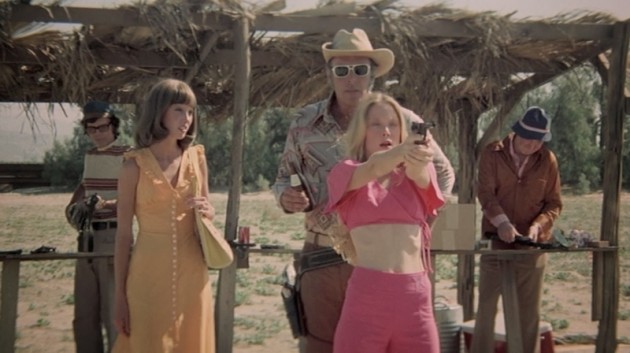
Images
Altman’s Images (1972) is a story of a woman, Catherine (Susannah York), who can not distinguish between what is real and what is a figment of her imagination. In turn, we the audience, also become confused as to what is real. We are brought into Catherine’s terrifying world and never really escape it. She embodies much of the labile and mentally unstable woman that has been defined over time as emotionally inconsistent, promiscuous, sexually dissatisfied and challenging to patriarchal gender dynamics. In this film Catherine appears to be battling a psychosis that is closely linked to the affairs of her past. Although the film’s temporality is linear, Catherine’s is eschewed and her past relationships infiltrate her present. Similar to Edgar’s demise in 3 Women , Catherine’s husband Hugh’s death is the result of an unstable woman. I would also argue that similar to 3 Women , the film is perhaps commenting on a male-dominated culture, but ultimately, in order for the domination to be subverted, the woman must go crazy and thus become something to be feared. The fact that Catherine’s craziness is so closely aligned with her sexuality is particularly troubling. Are we all to be “haunted” by stigmatized sexual pasts?
We are first made aware of Catherine’s “illness” during a phone call. She is speaking to her husband and the call is interrupted by a woman who asks in a taunting, sexual voice, “Do you know where your husband is?”…. “Old Hugh is with a girl”, and gives her an address. When Hugh appears home she is temporarily comforted, that is until he takes the form of one of her past lovers, Remi, who has been dead for three years. Now she becomes hysterical, running into the bathroom and screaming at the top of her lungs, and demands they go to her country house where she grew up, thinking it will bring her peace.
Much to her dismay, Remi has followed her there. When he first seduces her she whispers, “This is not happening. This is not happening. I will not let this happen again”. This double entendre manages to conflate her sanity with her ability to resist immoral activity. Additionally, her mental instability, as well as her real and imaginary infidelity, are consistently portrayed as something she is doing to her husband that she must stop. For example, when Marcel, who appears to Catherine in the form of her husband (she sees past her own hallucination), violently kisses her against her will she exclaims, “You listen to me, just stay away from me, you hear!? I love my husband, and that’s what I’m gonna do from now on. I’ve been sick — I’m sick! But I’m gonna go in there and I’m … I love him and I’m gonna show him I love him”. Here she speaks as if her illness is equally as harmful to him as her affairs.
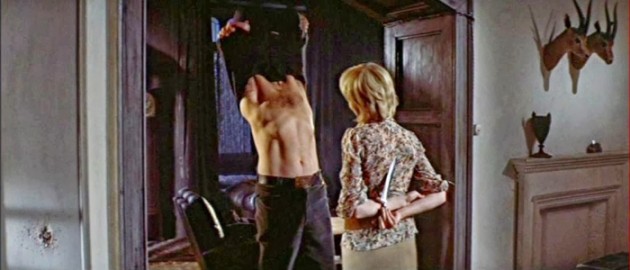
Her second haunting from the past comes to her in flesh and bone. Marcel is a “close friend” of Catherine and Hugh’s and when visiting from his nearby cabin, he immediately begins to sexually harass Catherine. He is physically and sexually aggressive in her psychotic visions, in the flashbacks, and in the present. Although, it is important to note that some of the time, Catherine seems to go back and forth between being repulsed and aroused. This behaviour may also be a coping mechanism in dealing with Marcel’s virtual rape. Marcel states, “You know what you are? You’re a schitzo, one minute fighting like a tiger and the next all love and kisses”. This is another instance wherein Catherine’s sexual dubiousness is equated with being crazy. Apparently, a woman is not allowed to change her mind.
To Catherine’s delight, she manages to get rid of both ghosts by killing them, but she isn’t able to dispose of a second version of herself who has been haunting and taunting her from the beginning. Finally, she drives this version of herself off a cliff. In the final scene, when she is back at home in her shower, the other Catherine comes into the bathroom and alerts her that she didn’t kill who she thought she did. We then see Hugh’s dead body, mangled on the rocks. In the end, her madness led to the demise of her husband, and her marriage. As I have previously stated, the abusive men in this story are defeated and the dynamics of domination are subverted, but this accomplishment requires her to go insane. She becomes not-quite-monster, but definitely something fearsome and unpredictable. The liminal space that Catherine brings us into is one in which desire, fear, anger, and excitement can all occur at once. Furthermore, we are drawn to certain conclusions around which events have indeed taken place and which took place in Catherine’s mind, but Altman leaves much of the film open to interpretation. We cannot really be sure of anything.
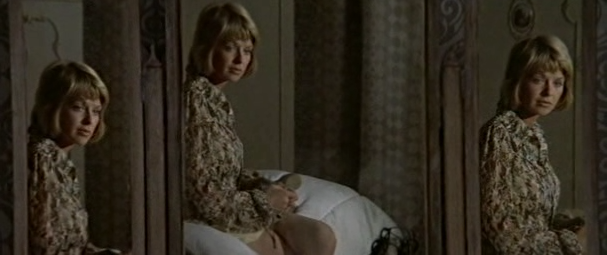
Conclusion
While we may think of the “hysterical” woman as something from our past, she still permeates our society today. Countless magazines are sold on the promise of an inside scoop on a “celebrity meltdown”. We fear and are simultaneously fascinated by the unpredictable, overtly sexual, or rebellious woman. As I have shown, our fear has deep roots in the way women’s mental health has been conceived throughout the centuries. Altman’s Images and 3 Women contain hysterical women who bring us into their madness and keep us there. In recognition of our own fear, we come face to face with our expectations for women to fulfill certain gender roles; but when these roles are turned upside down or inside out, we turn to “horror” as the consequence.
Works Cited
Brown, Laura S. “A Feminist Critique of the Personality Disorders.” Personality and Psychopathology: Feminist Reappraisals . New York: Guilford P, 1992. 206-28. Print.
Caplan, Paula and Jermy Caplan. “Modern Researches about Sex Differences in the Brain.” Thinking Critically about Research on Sex and Gender, 3rd Ed . Toronto: Pearson, 2009. 58-64. Print.
Gabbard, Krin. “Altman’s 3 Women.” Literature Film Quarterly 8.4 (1980): 258.
Janisse, Kier-La, House of Psychotic Women: An Autobiographical Topography of Female Neurosis in Horror and Exploitation Films . FAB Press, 2012. Print.
Metzl, Jonathan. “The Name of the Father, the Place of Medication: A Brief History of Psychiatry,1955-2002.” Prozac on the Couch: Prescribing Gender in the Era of Wonder Drugs . Durham: Duke UP, 2003. Print.
Lerner, Paul Frederick. Hysterical men: War, psychiatry, and the politics of trauma in Germany, 1890-1930 . Cornell University Press, 2003. Print.
Sanjek, David. “A Case For Robert Altman.” Literature Film Quarterly 19.1 (1991): 66.
Self, Robert T. “Robert Altman’s subliminal reality.” Film Criticism . 4.1 (1979): 74-80
Showalter, Elaine. “Nervous Women: Sex Roles and Sick Roles.” The Female Malady: Women, Madness, and English Culture, 1830-1980 . New York: Pantheon Books, 1985. 121-44. Print.
Notes
- Laura S. Brown stated in “A Feminist Critique of the Personality Disorders” that “…traditional theories of personality and psychopathology often join with the culture at large in their devaluation of certain characteristics of normative female gender-role socialization” … “While male gender-role normative behavior continues to be perceived as the human criterion for healthy psychological functioning, much of the female gender role continues to be perceived as pathological or potentially pathological in some way.” (Brown, p. 212 ↩
- A work by Paula Caplan and Jermy Caplan lays out the ways in which modern neuroscience is carried out that make it impossible to find real, tangible differences between men and women’s brains. They give a number of examples including: a. If two people are found to be activating the same part of their brain while carrying out a task, it does not mean that there are not numerous other parts of the brain also working to complete this task — In this way we cannot assume that two people are carrying out the task in an identical manner. (59) b. Brain activity is a “concomitant of anxiety, excitement, interest in, and discomfort with the task”. Therefore, since gender/sex norms foster “attitudes, beliefs, and emotions” related to certain tasks based on one’s sex, these could lead to sex differences in brain activity, rather than the task itself. (59-60) ↩
- Hysteria has been associated with the female for thousands of years. In fact, the term itself derives from the Greek word hystera (uterus in English) and for the majority of its three thousand year history, the illness was associated with the female reproductive system. In classical medicine the mysterious illness was said to be the result of the uterus wandering up into the throat. Although the anatomical explanations did not survive, the identification of hysteria with female sexuality did (Lerner 24) ↩
- The troubled bedridden woman is a common figure in film and in the history of psychiatry; Showalter notes that, whether it was anorexia, hysteria, or neurasthenia, a common treatment was restricting women to bed, establishing a kind of “womblike dependence” (Showalter, 139). ↩



